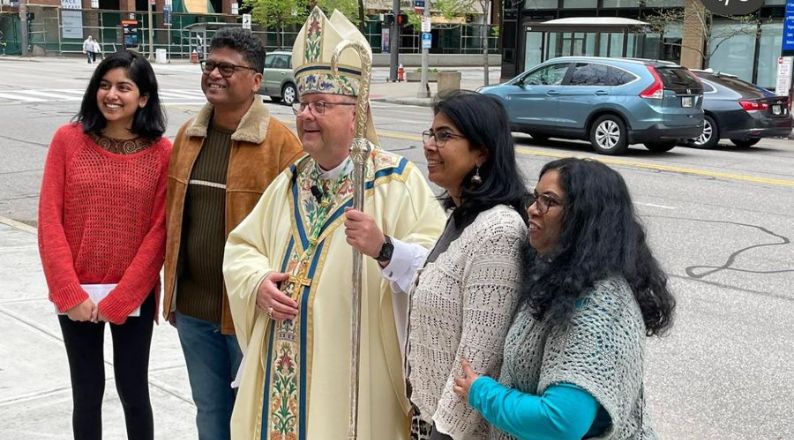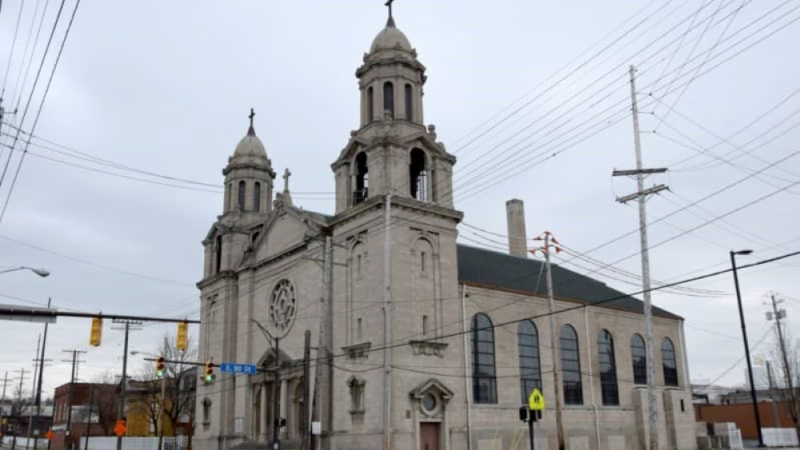Tim Daniel
(ZENIT News / Cleveland, 08.14.2023).- On July 28th, Monsignor Edward Malesic issued a decree transforming St. Elizabeth of Hungary Church in Cleveland into a diocesan sanctuary dedicated to the traditional Mass and the administration of other sacraments. Monsignor Malesic stated that the church would be employed «for worship according to the 1962 Roman Missal and other liturgical texts in use during that era.»
Unable to establish the church as a parish of the Tridentine rite, as prohibited by Pope Francis’s motu proprio, the bishop nonetheless granted the privilege of conducting sacraments and other acts of divine worship characteristic of parish churches: baptism, confirmation, marriage, and funerals.
The executive order also mandates that St. Elizabeth of Hungary Church, the seat of the oldest Hungarian Christian community in the United States, promote «the Christian heritage of the Hungarian people.»
Pope Francis’s motu proprio, Traditionis Custodes, instructs bishops not to permit the celebration of the traditional Mass in «parishes» or establish new personal parishes where this Mass is celebrated, a condition not met by this sanctuary.
Presently, within the Cleveland diocese, there are approximately a dozen locations where the Tridentine Mass is celebrated. The decree establishing St. Elizabeth of Hungary as a sanctuary takes effect on August 15th, the Feast of the Assumption of the Blessed Virgin Mary, coinciding with the date of the death of Saint Stephen, King of Hungary, who passed away on August 15, 1038.
The decree of establishment highlights the designation of St. Elizabeth of Hungary as a diocesan sanctuary for the promotion of the Christian heritage of the Hungarian people and for divine worship according to liturgical books in use prior to the 1970 reform (i.e., the 1962 Roman Missal and other liturgical texts from that time).

It further specifies that while the sanctuary cannot be erected as a parish per Traditionis Custodes, due to its distinct purpose, it should be regarded within the Cleveland diocese as equivalent to a parish. Consequently, the diocesan curia and parish churches must treat the sanctuary as a parish to the extent feasible.
The sanctuary is granted the privilege of performing sacraments and other acts of divine worship typical of parish churches, such as baptism, confirmation, marriage, and funerals. However, the sanctuary’s ministers must ensure their valid and licit celebration in accordance with the rules of law.
Lastly, the sanctuary is privileged to maintain its own records of baptism, confirmation, first communion, marriage, and death, without prejudice to the rights of the territorial parish and St. Emeric Parish (which, as a personal parish, may administer sacraments to Hungarian citizens throughout the Cleveland diocese, especially at St. Elizabeth of Hungary).
The sanctuary will not be «exclusively» dedicated to the traditional Mass, which will only be celebrated, as reported by St. Elizabeth of Hungary Church’s website, on Saturdays. Thus, the grant remains restricted. Notably, the authorization to perform other sacraments contradicts the clarifications provided by Cardinal Arthur Roche in response to questions about the motu proprio, potentially eliciting reactions.



